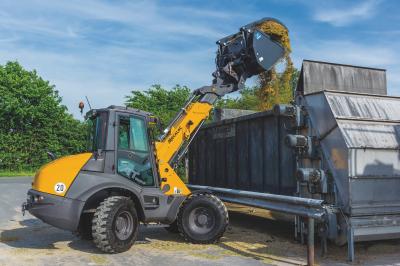Since 1955 nearly 20 projects aimed at expanding a 130-mi. stretch of U.S. Highway 395 — the Eastern Sierra Nevada’s major transportation artery — into a four-lane expressway have concluded, including the recently completed Manzanar/Independence Four-Lane Project.
The $39.2 million project was finished in early November by Granite Construction and focused on expanding a two-lane, 12-mi. stretch of Highway 395 — from south of the Los Angeles aqueduct to just north of the town of Independence — into a four-lane divided expressway, with the existing two lanes receiving rehabilitation.
The project also involved the construction of a four-lane, all-paved road within the city of Independence, the building of a two-lane bridge over the Los Angeles aqueduct, and the installation of 33 drainage systems including a 10 by 12 ft. (3 by 3.7 m) reinforced concrete box culvert.
Along with standard highway construction equipment — such as graders, grinders, asphalt paving machines and rollers — notable equipment used onsite included six Caterpillar 651 scrapers, three Caterpillar 623 scrapers, two Caterpillar D10 dozers and a Caterpillar D8 dozer, according to Susan Lent, public information officer for Caltrans District 9.
The contract also included a material site/pit where Granite Construction used typical rock crushing and screening equipment along with batch plants to crush and produce aggregate for the project.
“In lieu of buying it from a commercial source, we manufactured and produced all the materials [aggregate and hot base asphalt mix] with the exception of the concrete,” said Jose Hernandez, project manager of Granite. “If we had to bring this material in from Bishop [a city 40 miles away] it would have increased the total value of the contract.”
While the largest portion of the project, in terms of mileage, was the widening of Highway 395 by two lanes; the most challenging aspects of the project were related to the work within the city of Independence and the construction of the Los Angeles aqueduct bridge.
Construction operations within Independence, which has a population of roughly 600, resulted in the discovery of numerous underground storage tanks, which belonged to gas stations that were in business during the early 1900s, Lent said.
The discovery of storage tanks caused a delay in construction, as hazardous waste remediation and removal had to be conducted by contractors who initially would not have worked on the project.
Additionally, basement access to an 1880s building was discovered when a sidewalk was removed for replacement, and an existing box culvert was found underneath one of the roadway alignments.
During roadway work within the town, Innovative Concrete — one of the project’s subcontractors — used a slip form machine to pour the concrete curb and gutters. This machine eliminated the time-consuming process of wooden form placement for the curb and gutter.
Aside from constructing a four-lane, all paved road, other work within Independence included expanding sidewalks, constructing shoulders for parking, and installing “historic” overhead lighting.
This amount of work within a small community was at times hectic and represented a continuous project challenge, as pedestrian accessibility and commuter travel had to be maintained.
During the second year of roadway construction — both within Independence and outside town — work was suspended for three months as winter temperatures were too low to allow for paving operations, Lent said.
A total of 122,356 tons (111,000 t) of asphalt concrete and 49,053 tons (44,500 t) of rubberized asphalt concrete were used to complete all project-related paving operations.
Responsible for carrying northbound traffic along a portion of Highway 395, the newly constructed Los Angeles Aqueduct bridge is a single span, cast-in-place concrete box girder bridge, which is approximately 200 ft. (61 m) in length and 41 ft. (12.5 m) wide.
During construction of the bridge’s footings, the installation of a cofferdam system within the aqueduct was required to allow for dewatering and driving of steel piles. Granite also erected false work to support the bridge’s superstructure during construction.
The main challenge during bridge work involved the concrete slope lining of the live aqueduct the bridge crosses.
The utility company operating the aqueduct placed a construction window for low flow within the contract. During bridge work, periods of bad weather impeded the contractor’s ability to construct the concrete slope lining while maintaining low flow in the given time frame.
“We had a big rain event and it also snowed,” Hernandez said, adding the weather resulted in a rise in water flow and an increase in stormwater runoff. To combat this, the contractor constructed a water diversion and worked closely with Caltrans and the utility company.
“As the end of the construction window for this activity approached — leading to the potential that construction of the lining would have to be halted until the next year — close coordination with the utility company and the contractor allowed work to be accelerated and completed as scheduled,” Lent said.
A total of 1,223 cu. yds. (935 cu m) of structural concrete was used for the bridge’s deck, footings, and approach slab. The amount of bar reinforcing steel for the bridge totaled 225,758 lbs. (116,010 kg)
With the completion of the Manzanar/Independence Four-Lane project there remains only one 12.7-mi. (20.4 km) section of the previously mentioned 130-mi. (209.2 km) stretch of Highway 395 that has not been upgraded to a four-lane expressway. That 12.7-mi. stretch will be expanded as part of the Olancha/Cartago Four-Lane Project; however no construction commencement date has been set for that project.
Today's top stories















